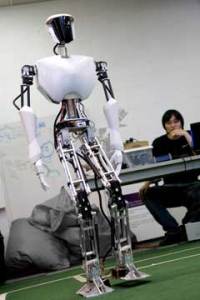If I mention Craig Ferguson, everybody knows who I am talking about, right? He’s the hilarious host of the Late Late Show on CBS that airs from 12:30 – 1:30 am each night. He’s a wonderful comedian, actor, writer, and musician with an irreverent wit that is one part Scot (single malt) and one part American.
OK, so one of Craig’s running gags is an obsession with robots and skeletons. In fact, he calls his Twitter followers his “Robot Skeleton Army”. Craig is also a huge fan of the show Mythbusters, and he convinced their resident mechanical genius, Grant Imahara, to design and build a Robot Skeleton sidekick for his talk show. You can see some videos of the robot on YouTube, here.
“But Mike, what does this have to do with technology?” you ask. That’s a good question, and one I am about to answer. So just hold on a minute, ok? Sheesh.
The point is, Craig’s Robot Skeleton (named Geoff Petersen) is pretty lame. Now the Mythbusters are totally cool, in a nerdy sort of way, and Grant Imahara is a practical genius, but you have to admit that Geoff is just not really what you would expect for a real robot skeleton sort of guy, even as shtick for a late night talk show comedian.
Enter Dennis Hong and his RoMeLa group at Virginia Tech. Dennis and a team of undergrad ME students have designed and built a real walking robot that makes Geoff look like a Neanderthal by comparison, robotically speaking. The robot’s name is CHARLI (Cognitive Humanoid Autonomous Robot with Learning Intelligence).
OK, so Dennis and the ME nerds are not really good at coming up with names for their gadgets (anything with “-a-tron” at the end would have been good…), but this is just so cool you can forgive them. Watch this movie of CHARLI walking and you’ll see what I mean.
And that’s not all. Browse around on the RoMeLa site and you’ll see a load of mechanical, robotic creepy crawlies that will set your nerd nerves all a tingle. How cool would it be to work in Dennis’ lab?
So, Craig, anytime you want to trade that pile of lame scrap, Geoff Petersen, in for a real robot skeleton, just give Dennis Hong a call. He can fix you up with any sort of robotic sidekick you want.

